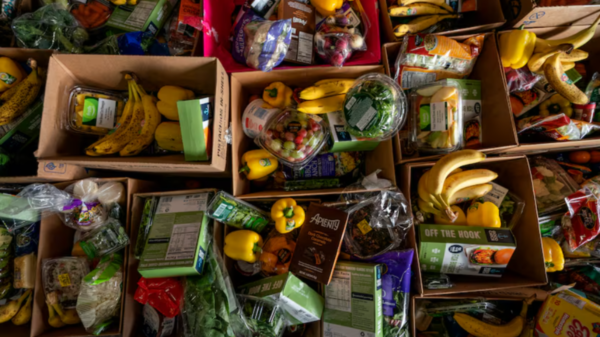BY Jaclyn Albin, M.D.Internal Medicine – Combined Internal Medicine and Pediatrics
Sarah Barlow, M.D.Pediatrics

Summer is just around the corner, and when the temperatures heat up, so do our cravings for sweet, icy cold treats.
In fact, your kids are probably already daydreaming about those lazy days of summer filled with pool parties, outdoor fun, and a blizzard of frozen favorites – shaved ice, popsicles, frozen yogurt, gelato, slushes, shakes, and ice cream, just to name a few.
Sugar has become almost synonymous with the season, with some children eating up to five times more sugar in the summer than at any other time of year, according to a 2018 poll of 1,000 parents.
That’s particularly alarming because throughout the year, most kids age 2-18 already eat about 17 tsp. or 71 grams of added sugar a day – nearly three times the daily limit of 6 tsp. or 25 grams suggested by the American Heart Association (AHA). Kids younger than 2 should have no added sugar at all, according to the AHA.
“Added sugar” means exactly what the name implies. Manufacturers put extra sugar into packaged foods and drinks on top of naturally occurring sugars.
Extra sugar can put your child on a constant high-energy-crash rollercoaster that can affect their concentration, mood, learning ability, and sleep cycle. And it’s full of empty calories that don’t nourish the body. According to the AHA, 1 gram of added sugar contains four calories – so a food with 15 grams of added sugar (a single-serving, fat-free vanilla pudding, for instance) contributes 60 non-nutritive calories per serving.
Over time, those empty calories stack up and contribute to lifelong health problems, such as:
- Obesity and metabolic disease
- Heart disease
- High blood pressure
- Type 2 diabetes – approximately 30% of U.S. teens already meet prediabetes criteria, and teens living in poverty are most at risk
It would be silly to suggest that families cut out all added sugars – it’s in most packaged foods, and we’re a society on the go. Plus, enjoying an occasional sweet or treat is an important part of life.
But added sugars do not nourish and fuel us, and we all deserve to eat foods that love our bodies back. Let’s take a look at a few ways to steadily reduce your kids’ sugar intake this summer and start improving the whole family’s long-term eating habits.
1. Check for added sugars on food nutrition labels
Nutrition labels contain a lot of information, which can be a little overwhelming. There are generally two lines specifically about sugar on a food label:
- Total Sugars, which counts natural and added sugars together. Naturally occurring sugars, such as in fruits and vegetables, are not a cause for alarm.
- Includes (X)g Added Sugars, which counts only the extra sugars added during processing.
If your goal is to reduce sugar intake, pay attention to the added sugars line on the label. The AHA suggests the following guidelines for children and adults’ daily added sugar intake:
- Younger than 2: 0 grams daily
- Ages 2-18: 6 tsp./25 grams or less a day
- Adult women: 6 tsp./25 grams or less a day
- Adult men: 9 tsp./36 grams or less a day
However, don’t feel like you need to spend a lot of time analyzing the ingredients for specific types of added sugar, such as high-fructose corn syrup, dextrose, or fructose. Research is underway to determine how certain types of added sugar affect our bodies, and the added sugars on the nutrition label include these other forms of sugar. What we already know is that all added sugar does not fuel our bodies in the way that nutritious foods do.
See how much added sugar is in some common sweet treats

Sodas and sweets drinks
- Regular soda, 44-69 grams or 11-17 teaspoons
- Fruit drinks, drink mixes, and juice, 13-22g, 3 1/2-5 tsp
- Sweetened coffees and teas, 12-48g, 3-12 tsp
- Sports drinks, 21-34g, 5-8 1/2 tsp
- Flavored milk, 7-18g, 2-4 1/2 tsp

Breakfast foods
- Waffles and pancakes, 2-9g, 1/2-2 tsp
- Hot and cold cereals, 0-12g, 0-3 tsp
- Yogurt, 13-22g, 3-4.5 tsp
- Smoothies, 7-14g, 2-4 1/2 tsp
- Granola and cereal bars, 7-11g, 2-3 tsp

Syrups and Spreads
- Jelly and jam, 9-12g, 2-3 tsp
- Honey and molasses, 0-15g, 0-4 tsp
- Syrup, 17-22g, 4-5 1/2 tsp
- Nut butters and spreads, 2-19g, 1/2-5 tsp
- Frosting, 17-19g, 4-5 tsp

Frozen Snakes
- Ice cream, 14-24g, 3 1/2-6 tsp
- Frozen yogurt and gelato, 7-20g, 2-5 tsp
- Popsicles and fudgsicles, 6-21g, 1 1/2-5 tsp
- Sherbets and sorbets, 0-20g, 0-5 tsp
- Shake and malt mixes, 12-16g, 3-4 tsp

Baked Goods
- Cookies, 14-16g, 3 1/2-4 tsp
- Pie or cake, 25-38g, 4-9 1/2 tsp
- Sweet breads and rolls, 5-9g, 1-2 tsp
- Crackers, 1-7g, 1/2-2 tsp
- Donuts and pastries, 14-23g, 3 1/2-6 tsp

Sugar Superises
- Ketchup, 3-4g, 1 tsp
- Pasta sauce, 0-3g, 0-1tsp
- Barbecue sauce, 4-11g, 1-3 tsp
- Frozen pizza, 1-2g, 1/2 tsp
- Packaged soups, 0-5g, 0-1 tsp
2. Try sugar-swaps for favorite snacks
Simple swaps and food combinations can help you turn your child’s foods from sugar bombs to nutritional powerhouses – without sacrificing flavor. Here are a few of our favorite snack hacks:
- Combine food groups: Pair a protein with produce, such as peanut butter and celery or cheese and apple. These pairings provide a kick of sweetness with satiety – protein combined with fiber helps us feel full longer.
- Switch out spreads and cereals: Choose a no-sugar-added option for spreads and cereals. For example, putting smashed banana or nut butter on toast instead of jelly or picking a lower-sugar cereal option. Cut down gradually if your family isn’t ready to change all at once.
- Stir up refreshing homemade drinks: Instead of reaching for soda and fruit juices, which can account for a large portion of kids’ daily sugar, try infusing a pitcher of water with your child’s favorite fruits or herbs. Strawberry sparkling water and minty tea (unsweetened) can be especially refreshing in the summertime.
- Make juice a treat instead of a go-to drink: Juice can be tricky since the sugar technically comes from fruit. But it’s not the same as eating a whole piece of fruit. Keep juice in the special treat category for rare occasions.
- Slowly reduce how much sugar you use in recipes: Try swapping sugar and syrup in your favorite recipes with natural alternatives. Bananas and no-sugar-added applesauce can be excellent, flavorful options. Or, simply cut down the amount of sugar the recipe calls for – it shouldn’t change the consistency of the food, just the sweetness.
It can take time to retrain your child’s tastebuds to enjoy foods with less added sugar. Don’t expect it to happen overnight. For example, if your child loves to eat a candy bar after school, give them a plain milk chocolate bar instead of one loaded with caramel and nougat, too. Then, gradually move to smaller pieces of darker chocolate, which contain less sugar, then some chocolate sprinkles on light yogurt.
For more low-sugar or sugar-free ideas, there are plenty of website and social media accounts in which pediatric dietitians offer fun and creative food alternatives.

3. Empower kids to set a ‘sugar budget’
Kids more readily adapt to change if they play an active role in the process.
If your child can understand addition and subtraction, they can start analyzing and choosing their foods based on sugar “budgeting.” For example, if the granola bar they want has 10 grams of added sugars, they know they only get 15 grams to “spend” the rest of the day.
Other kids respond better to visual cues. If there are four treats available, explain why it’s not healthy to eat all four and let them choose one.
Another tip we love is to “eat the rainbow” of plants. In our Culinary Medicine practice, we explain to younger children that each color holds a superpower (nutrients), and to get all their powers, they need to eat all the colors – leaving less room in the tummy for processed foods that are high in added sugar.
4. Make nutritious choices together
Children absorb and imitate what people around them are doing. If they see you choosing nutritious foods, they’ll be more likely to do the same.
Whether your child loves sports, music, or math, eating less sugar over time can help them achieve their goals by staying healthier and more active. Benefits transcend weight management – even kids at an optimal weight might not be metabolically healthy. For example, slender children can have high blood pressure or elevated sugar levels that are detrimental to heart health over time.
In youth, it’s tough to see past the immediate experience of health decisions. Particularly if your child has prediabetes or Type 2 diabetes, talk with their pediatrician about how to help them understand the long-term benefits of forming healthy habits now. Both conditions are reversible and treatable – getting control early in life can result in better outcomes.
As your family starts to reduce sugar intake, remember to be gentle with yourself as a parent. It’s OK to give your child a candy bar once in a while. Trying to overhaul your family’s diet overnight might backfire, with kids sneaking treats or feeling anxious about their food choices.
Instead, slow and steady progress will yield long-lasting results. And don’t worry! You can still enjoy ice cream cones this summer as an occasional treat.
To discuss your child’s diet and health, call 214-645-8300 or request an appointment online.









You must be logged in to post a comment Login